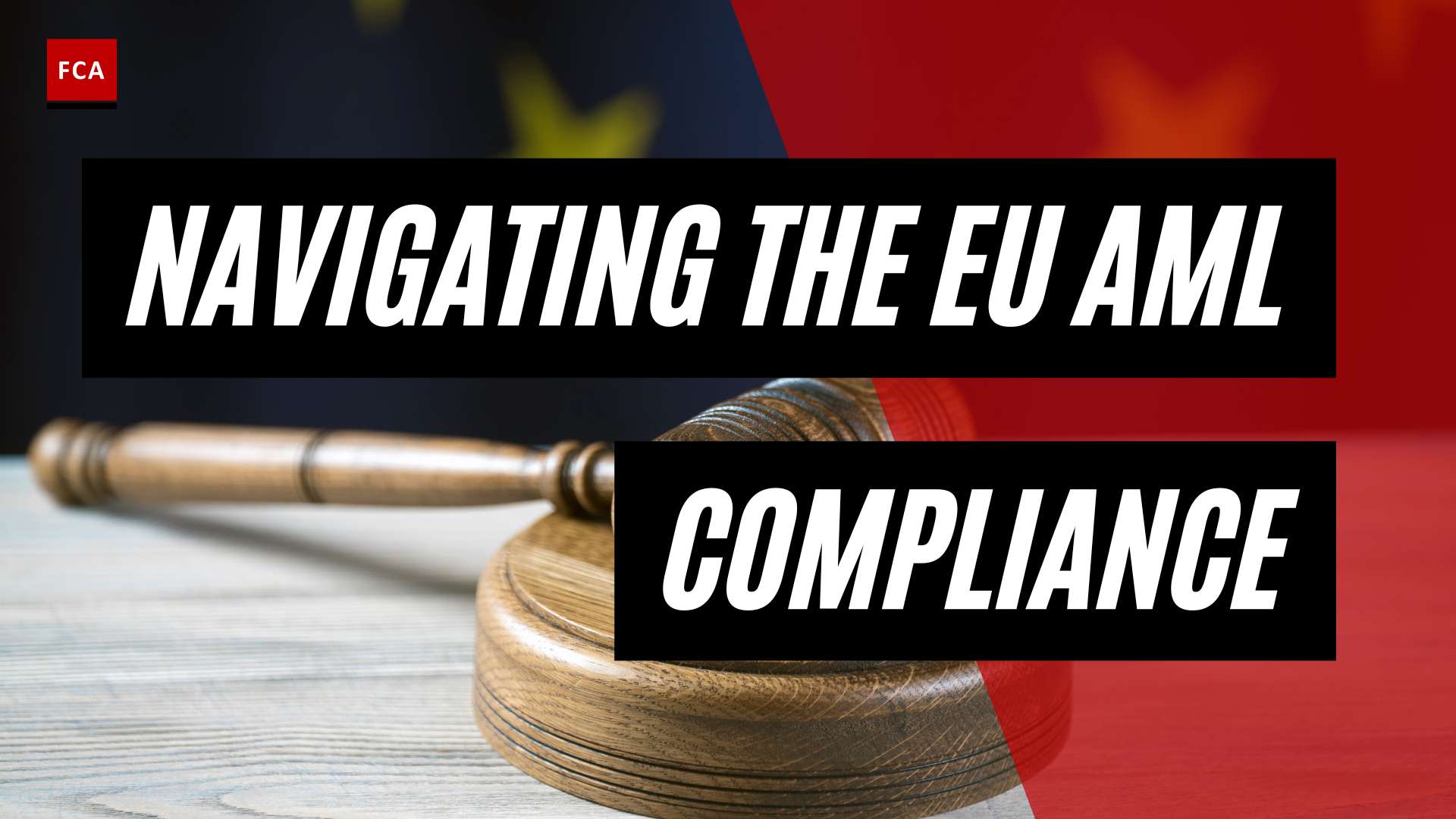Understanding AML Policy Framework
To combat financial crimes such as money laundering and terrorism financing, the implementation of a robust Anti-Money Laundering (AML) policy framework is crucial. This section will explore the importance of AML policy documentation and highlight the key components of an effective AML policy.
Importance of AML Policy Documentation
AML policy documentation plays a vital role in the fight against financial crimes. It serves as a comprehensive guide that outlines an organization’s commitment to preventing money laundering and complying with AML regulations. By documenting AML policies, financial institutions and businesses demonstrate their dedication to upholding ethical standards and safeguarding the integrity of the financial system.
The benefits of AML policy documentation extend beyond mere compliance. It helps establish a culture of transparency and accountability, both internally within the organization and externally with customers. A well-documented AML policy sets clear expectations for employees, ensuring they are aware of their roles and responsibilities in detecting and reporting suspicious activities.
Furthermore, AML policy documentation serves as a valuable resource during audits and regulatory examinations. It provides evidence of an organization’s efforts to mitigate the risks associated with money laundering and demonstrates compliance with AML regulations. By maintaining accurate and up-to-date AML policy documentation, businesses can avoid potential penalties and reputational damage.
Key Components of AML Policy
A comprehensive AML policy consists of several key components that collectively form a robust framework for combating money laundering. These components include:
-
Risk Assessments and Due Diligence: Conducting thorough risk assessments and due diligence procedures is essential for identifying and understanding the potential money laundering risks faced by an organization. This includes assessing the risk associated with customers, business relationships, and geographic locations.
-
Customer Onboarding and Monitoring: Establishing effective customer onboarding processes and implementing ongoing customer monitoring mechanisms are vital to detecting and preventing money laundering activities. This includes verifying the identity of customers, conducting customer due diligence, and monitoring transactions for suspicious activities.
-
Independent Audits and Testing: Regular independent audits and testing play a crucial role in evaluating the effectiveness and compliance of an organization’s AML policies and procedures. These audits assess the implementation of controls, identify any gaps or weaknesses, and provide recommendations for improvement.
By incorporating these key components into their AML policies, businesses and financial institutions can establish a strong framework for detecting, preventing, and reporting suspicious activities related to money laundering. It is important to note that AML policies should be tailored to the specific risks and regulatory requirements of each organization.
In the next sections, we will explore the importance of compliance with AML regulations and delve deeper into the elements of an effective AML policy. Stay tuned to learn more about how businesses can adhere to AML regulations and ensure the integrity of their financial systems.
For an AML policy template and information on AML policy requirements, please visit our AML Policy Template and AML Policy Requirements pages.
Compliance with AML Regulations
To combat financial crimes and protect the integrity of the financial system, Anti-Money Laundering (AML) regulations have been put in place worldwide. Understanding and adhering to these regulations is crucial for businesses operating in sectors prone to money laundering risks.
AML Regulations and Financial Crimes
AML regulations are designed to prevent, detect, and report activities related to money laundering, terrorist financing, and other financial crimes. These regulations require businesses to implement robust policies, procedures, and controls to mitigate the risks associated with these illicit activities.
The regulatory landscape for AML is constantly evolving, with governments and regulatory bodies regularly updating and strengthening AML frameworks to stay ahead of emerging threats. Non-compliance with AML regulations can have severe consequences for businesses, including hefty fines, reputational damage, and legal ramifications.
According to LexisNexis, AML fines have increased by 50%. Regulatory bodies are becoming stricter in enforcing compliance, and alleged breaches of AML regulations result in increasingly large fines against companies. These fines serve as a deterrent and emphasize the importance of robust AML policies and procedures.
Implications of Non-Compliance
The repercussions of non-compliance with AML regulations can be significant and far-reaching. Non-compliance can result in substantial fines imposed by regulatory bodies. For instance, in 2020, Goldman Sachs was fined $2.9 billion for its involvement in the 1MDB scandal (FlagRight). Financial institutions found to be non-compliant may also be required to return funds obtained through illicit activities, adding to the financial burden.
In addition to financial penalties, non-compliance with AML regulations can lead to class-action lawsuits from shareholders or customers, resulting in additional substantial financial payouts (FlagRight). The operational implications of non-compliance are also significant. Businesses may face disruption in their operations, the need to invest heavily in remediation efforts, and even the revocation of their license to operate (FlagRight).
To mitigate the risks associated with non-compliance, businesses must prioritize AML policy documentation, implementation, and regular review. By establishing robust AML policies and procedures, conducting thorough risk assessments, and ensuring effective customer due diligence and monitoring, businesses can demonstrate their commitment to compliance and mitigate the potential consequences of non-compliance.
In the next section, we will explore the elements of an effective AML policy, which includes risk assessments, customer onboarding and monitoring, and independent audits.
Elements of an Effective AML Policy
To develop an effective Anti-Money Laundering (AML) policy, financial institutions and businesses must consider several key elements. These elements help establish a robust framework for preventing and detecting money laundering activities. The three crucial components of an effective AML policy are risk assessments and due diligence, customer onboarding and monitoring, and independent audits and testing.
Risk Assessments and Due Diligence
Risk assessments and due diligence procedures are fundamental to an effective AML policy. Financial institutions and businesses must conduct thorough risk assessments to identify and understand their specific vulnerabilities to money laundering risks. This assessment involves evaluating various factors, including the nature of their business, the types of customers they serve, and the geographical locations in which they operate.
Based on the risk assessment, due diligence procedures should be implemented to ensure appropriate customer onboarding and ongoing monitoring. This involves verifying the identity of customers, assessing their risk profile, and conducting enhanced due diligence for high-risk customers. By understanding the level of risk associated with each customer, financial institutions can tailor their AML efforts to detect and prevent potential money laundering activities.
Customer Onboarding and Monitoring
Customer onboarding and ongoing monitoring play a crucial role in an effective AML policy. Robust customer onboarding processes should include verifying the identity of customers, conducting background checks, and assessing their risk level based on the risk assessment conducted earlier. By implementing comprehensive customer identification procedures, financial institutions can mitigate the risk of money laundering.
Ongoing monitoring of customer transactions is equally important. Through regular monitoring, financial institutions can identify suspicious activities, detect potential patterns indicative of money laundering, and report any suspicious transactions to the appropriate authorities. This continuous monitoring helps ensure compliance with AML regulations and aids in the prevention and detection of financial crimes.
Independent Audits and Testing
Regular independent audits and testing are essential elements of an effective AML policy. Third-party organizations should conduct these audits on a regular basis to assess the effectiveness of the AML compliance program. The recommended interval for audits is every 12-18 months, although more frequent audits may be necessary in high-risk areas (Flagright).
During independent audits, the organization’s AML program, policies, procedures, internal controls, and recordkeeping are thoroughly reviewed. Testing is conducted to identify weaknesses and evaluate the effectiveness of internal controls and transactional systems (FinCEN). The auditors or reviewers should also assess compliance with AML regulations, internal policies, and procedures.
The results of independent audits and testing provide valuable insights into the strengths and weaknesses of the AML program, allowing organizations to make necessary improvements and enhancements. These audits are critical for maintaining a robust AML compliance program and demonstrating a commitment to combating money laundering and financial crimes.
By incorporating risk assessments and due diligence, customer onboarding and monitoring, as well as independent audits and testing, organizations can establish an effective AML policy. This multi-faceted approach helps create a comprehensive framework that enhances the detection and prevention of money laundering activities, ensuring compliance with AML regulations and safeguarding the integrity of financial systems.
AML Policy Documentation Requirements
To effectively combat money laundering and ensure compliance with Anti-Money Laundering (AML) regulations, financial institutions and businesses must establish robust AML policies. AML policy documentation plays a vital role in providing clear guidelines, procedures, and controls to prevent illicit activities and promote transparency within organizations.
The Role of AML Policy Documentation
AML policy documentation serves as a cornerstone in establishing a strong AML framework. It outlines the organization’s commitment to combat money laundering and sets forth the procedures and controls that need to be followed by employees and stakeholders. The primary roles of AML policy documentation are:
-
Guidance and Direction: AML policies act as a guide for employees, providing them with clear instructions on how to identify, prevent, and report suspicious activities or transactions that may be linked to money laundering or financial crimes.
-
Risk Mitigation: AML policy documentation helps organizations identify and assess potential risks associated with money laundering. By implementing effective policies and controls, businesses can mitigate these risks and protect themselves from financial, legal, and reputational damage.
-
Regulatory Compliance: AML policy documentation ensures that organizations adhere to AML regulations and meet their legal obligations. It enables businesses to demonstrate their commitment to combating money laundering and their compliance with regulatory requirements.
Content and Structure of AML Policies
The content and structure of AML policies may vary depending on the organization’s size, nature of business, and the regulatory framework within which it operates. However, effective AML policies typically include the following components:
-
Policies and Procedures: AML policies should outline the organization’s commitment to AML compliance and provide a framework for implementing and maintaining effective AML controls. This section should cover topics such as customer due diligence, transaction monitoring, suspicious activity reporting, and record-keeping requirements.
-
Risk Assessment: AML policies should incorporate a risk assessment process that enables organizations to identify and evaluate their exposure to money laundering risks. This assessment should consider factors such as customer profiles, geographic locations, products or services offered, and the complexity of transactions.
-
Internal Controls: AML policies should outline the internal controls and procedures that organizations have in place to mitigate the risks identified during the risk assessment process. These controls may include customer onboarding procedures, ongoing monitoring of customer activity, training and awareness programs, and the appointment of a designated AML officer.
-
Reporting and Record-Keeping: AML policies should provide guidance on the reporting of suspicious activities or transactions to the relevant authorities. They should also outline the record-keeping requirements, including the retention period for transactional and customer data.
Compliance with AML Regulations
Compliance with AML regulations is a critical aspect of AML policy documentation. AML regulations are designed to deter and detect money laundering activities, terrorism financing, and other financial crimes that can potentially destabilize economies and impact societal well-being. Non-compliance with these regulations can result in substantial fines and penalties for businesses, as well as reputational damage.
To ensure compliance with AML regulations, organizations must stay updated with the evolving regulatory landscape. They should regularly review and update their AML policies to reflect changes in regulations and best practices. Implementing a sound AML policy that aligns with regulatory requirements not only helps organizations avoid penalties but also promotes a culture of transparency and accountability in financial transactions.
By establishing comprehensive AML policy documentation, organizations can strengthen their AML frameworks, minimize money laundering risks, and contribute to the integrity and stability of the global financial system.
Independent Reviews of AML Programs
To ensure the effectiveness and compliance of Anti-Money Laundering (AML) programs, independent reviews play a crucial role. These reviews are designed to assess the adequacy and effectiveness of AML policies and procedures in place. In this section, we will explore the purpose and scope of independent reviews, how to conduct effective independent audits, and the frequency and reporting of these reviews.
Purpose and Scope of Independent Reviews
The purpose of conducting independent reviews of AML programs is to evaluate compliance with regulatory requirements, such as those set forth in the Bank Secrecy Act (FinCEN). These reviews aim to assess the effectiveness of policies, procedures, internal controls, recordkeeping, reporting functions, and training within the AML program.
The scope of the independent review should cover all essential components of the AML program. This includes evaluating the integrity and effectiveness of internal controls and transactional systems, identifying weaknesses or vulnerabilities, and recommending corrective actions if necessary. It is crucial for the review to specifically address unique money laundering risks associated with the business’s products, services, customers, and geographic locations (FinCEN).
Conducting Effective Independent Audits
It is not mandatory for an external auditor or consultant to conduct the independent review of AML programs. Internal officers, employees, or groups can carry out the review, as long as they are independent from the designated compliance officer and do not directly report to them (FinCEN). However, it is essential to ensure that the reviewer possesses the necessary expertise and independence to provide an unbiased assessment of the AML program.
To conduct an effective independent audit, the reviewer should have a comprehensive understanding of AML regulations and the organization’s AML policies and procedures. They should assess the AML program against regulatory requirements, internal policies, and industry best practices. This evaluation can involve transactional testing, evaluating the quality of recordkeeping, and conducting interviews with relevant personnel. The reviewer should also identify any deficiencies or weaknesses in the AML program and provide recommendations for improvement.
Frequency and Reporting of Independent Reviews
The frequency of independent reviews on AML programs should be determined based on the organization’s risk assessment. Factors such as the nature of products and services offered, customer profiles, and geographic locations served should be considered when determining the appropriate frequency of reviews. Some businesses may require more frequent reviews based on higher-risk factors or identified compliance issues (FinCEN).
Once the independent review is conducted, it is crucial to document the findings and recommendations in a comprehensive report. The report should outline the scope of the review, the methodology used, and any identified deficiencies or weaknesses in the AML program. It should also provide recommendations for remediation or enhancement. The report should be shared with senior management, the board of directors, and the designated compliance officer for appropriate action and follow-up.
By conducting independent reviews of AML programs, organizations can ensure the effectiveness and compliance of their AML policies and procedures. These reviews provide valuable insights into the strengths and weaknesses of the AML program and help organizations mitigate the risk of financial crimes. Regular and thorough independent audits contribute to the ongoing improvement of AML programs and the overall integrity of the organization’s anti-money laundering efforts.








